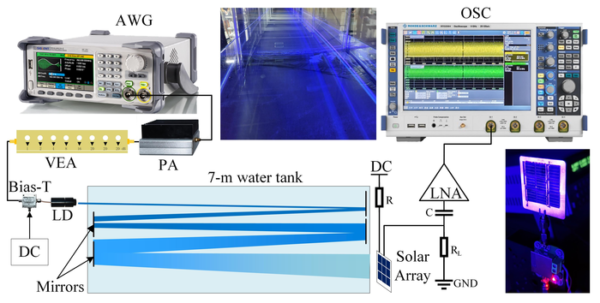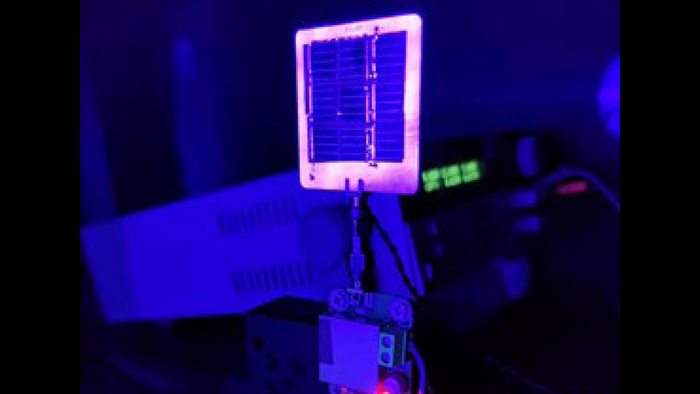Solar cells may have found a surprising new use case beyond electricity production; they are now being tested as underwater wireless data transmitters. Researchers are connecting arrays of series-connected solar cells to operate lens-free detectors that benefit from larger detection areas than prevailing lensed devices.
A research team at Zhejiang University in China recently published the development in Optics Letters. Lead researcher Jing Xu commented, “There is a critical need for efficient underwater data exchange in worldwide ocean protection activities.”
In ocean preservation efforts like coral reef protection, it is necessary to create data links and transmit data quickly from divers, submarines, underwater sensors and unmanned autonomous underwater vehicles back up to the surface ships analyzing their work. The cells may offer a way to send that data more efficiently.
“To the best of our knowledge, we demonstrated the highest bandwidth ever achieved for a commercial silicon solar panel-based optical communication system with a large detection area,” said Xu. Xu said that the system could even allow for data exchange and power generation in one device.
Light-based underwater wireless communications are preferable to radio or acoustic waves, as it offers higher speed, low latency and draws less power. Long distances create challenges for these light-based devices, however, as they require precise alignment between the transmitter and receiver. Solar cells’ ability to detect light from larger areas and convert it to an electrical signal lessens the amount of tight precision needed for the transmitter-receiver alignment, said the paper.

Through their research, Xu’s team was able to develop and optimize a peripheral circuit on the solar cells, minimizing the power draw of the data processing feature.
A prototype was tested, with a small 3×3 solar array with a detection area of 3.4 x 3.4 centimeters. It was able to demonstrate a bandwidth of 150Mbps across 35 meters with low power draw and high stability.
Xu said because solar cells are produced at a wide scale, the proposed scheme could be cost-effective. He said he also sees this type of detector used in visible light communication, a type of wireless communication that uses LEDs and other sources to transmit data across long distances.
The next stage of research will bring the solar cells into harsher real-world like conditions, testing movement, muddy water, and weakened optical signals.
This content is protected by copyright and may not be reused. If you want to cooperate with us and would like to reuse some of our content, please contact: editors@pv-magazine.com.









By submitting this form you agree to pv magazine using your data for the purposes of publishing your comment.
Your personal data will only be disclosed or otherwise transmitted to third parties for the purposes of spam filtering or if this is necessary for technical maintenance of the website. Any other transfer to third parties will not take place unless this is justified on the basis of applicable data protection regulations or if pv magazine is legally obliged to do so.
You may revoke this consent at any time with effect for the future, in which case your personal data will be deleted immediately. Otherwise, your data will be deleted if pv magazine has processed your request or the purpose of data storage is fulfilled.
Further information on data privacy can be found in our Data Protection Policy.